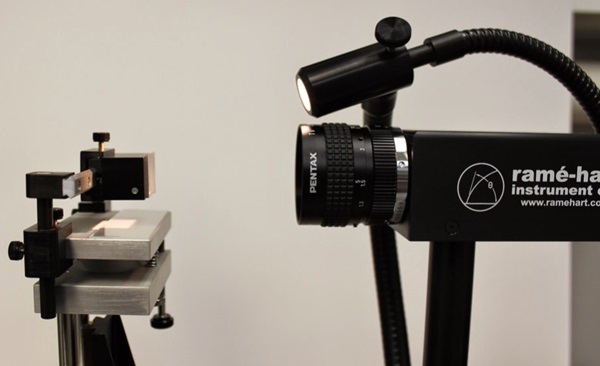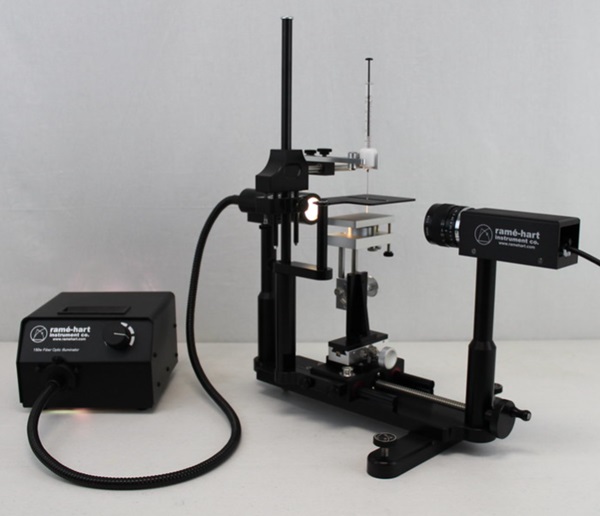|
April
2024 |
| Superspreading |
|
Superspreading refers a condition where a liquid spreads rapidly and completely over a surface, exhibiting exceptionally low contact angles. In superspreading, the contact angle is close to zero or can even be considered zero in the case of complete wetting, indicating that the liquid spreads out extensively or completely and quickly. This phenomenon is typically desirable in applications such as coatings, adhesives, and surface treatments, where achieving uniform coverage and adhesion is crucial. Superspreading can enhance surface wetting, leading to improved interactions between the liquid and the substrate. It can also minimize defects like pinholes or uneven coatings. There are a variety of ways that superspreading can be initiated. Researchers in the UK, for example, have developed a macroscopic theory of voltage-induced dynamic wetting that can result in adjustable superspreading behavior.1 This methodology could benefit a variety of coating and inking processes. Another example calls on trisiloxane polyoxyethylene which is amphiphilic, meaning it has both hydrophilic (water-attracting) and hydrophobic (water-repelling) parts in its molecular structure. In this case, the polyoxyethylene segment is hydrophilic, while the trisiloxane segment is hydrophobic. Added to water, trisiloxane polyoxyethylene molecules orient themselves at the water-air interface with their hydrophilic ends facing the water and their hydrophobic ends pointing away from the water. This unique arrangement lowers the surface tension of the water and can result in superspreading behavior on otherwise low-energy hydrophobic surfaces such as plastics.2 An array of agents, referred to as adjuvants, are commonly added to pesticide formulations in order to promote superspreading behavior.3 Researchers are particularly interested in finding surfactants that promote optimal superspreading of water-based formulations on highly hydrophobic plant leaves even from drops that are released at altitudes that result in high-speed impact.4 Organosilicone-based surfactants such as trisiloxane polyoxyethylene are often preferred for promoting superspreading in these conditions. Superspreading behavior is leveraged in medical diagnostics and assays to ensure rapid, uniform, and efficient distribution of reagents over solid surfaces, ultimately enabling sensitive and accurate detection of target analytes. Molecular-level simulations help researchers better understand the mechanisms behind superspreading behavior of surfactant-laden drops.5 Incorporating superspreading agents into assay formulations helps maximize assay performance, sensitivity, and reliability, making them invaluable components of diagnostic technologies.
The ramé-hart goniometer serves as an indispensable instrument for measuring low contact angles during superspreading phenomena that don't lead to complete wetting. Particularly, ramé-hart's exclusive Overhead Optical Imaging Kit accessory proves invaluable in accurately measuring ultra-low contact angles, especially on droplets exhibiting angles below 5°, where conventional profile-view methods fall short. This kit can be added to any Model 250 or higher instrument with DROPimage Advanced v2.6 or higher. In conclusion, superspreading, characterized by rapid and complete dispersion of liquid over surfaces with minimal or no contact angle, is a phenomenon highly desirable in various applications such as coatings, adhesives, medical diagnostics and surface treatments. It enhances surface wetting, improves interactions with substrates, and minimizes defects like pinholes. Initiating superspreading can be achieved through various methods, including voltage-induced dynamic wetting and the use of surfactants like trisiloxane polyoxyethylene, particularly beneficial for hydrophobic surfaces such as plastics or plant leaves in pesticide applications. Moreover, superspreading behavior is leveraged in medical diagnostics and assays to ensure efficient distribution of reagents, aided by molecular-level simulations that offer insights into underlying mechanisms. Notes |
| Products Mentioned |
|
ramé-hart Model 250 (p/n 250-U4) has been in production for over two decades. This instrument excels not only in the measurement of contact angles but also in measuring surface energy, surface tension, and interfacial tension with excellent precision. With an array of over 20 modular accessories available, Model 250 offers unparalleled versatility and expandability. These accessories include temperature controlled options, oscillation, precision automated dispensing, and automated tilting, among others. Such enhancements empower researchers with the ability to build experiments to their specific requirements and explore interfacial phenomena. Model 250 is furnished with the most powerful edition of the DROPimage software - DROPimage Advanced, engineered to accommodate both static measurements as well as more involved time-dependent studies. Equipped with a methods-based experiment design tool, this software facilitates the formation of complex experimental protocols, enhancing efficiency and enabling the exploration of dynamic phenomena with ease. Beyond its technical abilities, Model 250 features a user-friendly interface and extensive options for expandability. Its intuitive design ensures accessibility for researchers of all levels, while its adaptability enables continuous evolution to meet the needs of the scientific community.
The ramé-hart Overhead Optical Imaging Kit (p/n 100-31) enhances the capabilities of instruments like the DROPimage Advanced, including Model 250, by introducing a novel overhead method for contact angle measurement. Unlike traditional profile view methods, this approach offers distinct advantages, particularly in characterizing hydrophilic surfaces with low contact angles, which are typically challenging to measure accurately using conventional techniques. The key feature of this kit is its ability to capture images of the three-phase line from a top view, allowing for precise calculation of contact angles based on the diameter of that line and the volume of the drop. By employing this innovative overhead approach, researchers can achieve more accurate and reliable measurements, especially for surfaces with low contact angles, which have traditionally posed difficulties with conventional methods. Overall, the ramé-hart Overhead Optical Imaging Kit represents a significant advancement in contact angle measurement technology, providing researchers with a powerful tool for characterizing a wide range of surfaces, including those with highly hydrophilic properties. If you are interested in a quotation for a Model 250 with the Overhead Optical Imaging Kit or any instrument or accessory, feel free to reach out to us. If you already have a ramé-hart instrument, be sure to let us know the serial number so we can check compatibility. We look forward to being of assistance. |
|
Regards,
Carl Clegg |


